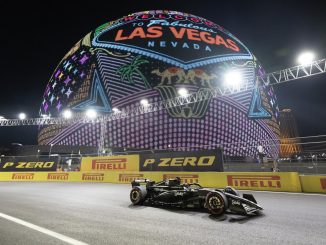
In exactly seven months time the city of Beijing will usher in a new dawn in motor racing. The launch of Formula E heralds the start of a bold new era, in which innovation will trump institution.
Formula E is the environmentally sustainable alternative to Formula 1 racing.
The pioneering movement, spearheaded by Spanish politician turned entrepreneur, Alejandro Agag, will change the face of one of the world’s most popular, yet environmentally damaging sports.
Agag has a clear goal in mind, to decrease the impact of automotive emissions on the planet, by creating something that appeals to conservationists and sports fans alike.
“It’s bold stuff. Not just motor racing, and not just entertainment, but a genuine agent of social change,” commented Lucas di Grassi ex F1 driver and 2008 GP2 winner.
There are many who scoff at the idea of a successful motor race series featuring cars powered solely by electricity. Racing ‘purists’ believe that there can be no substitute for the raw power and aggression of the traditional Formula 1 combustion engine.
The particularly disparaging CEO of F1 racing management, Bernie Ecclestone, believes that the project will fail because E cars “are not as visceral as even 2014’s slightly emasculated crop of F1 cars”.
The current batch of E racing prototypes travel at speeds close to 150 mph, similar to those achieved by their F1 counterparts; they can accelerate from 0 – 100 mph in under three seconds and have far superior torque sensitivity.
Impressive statistics, especially when you consider that E racing technology is in its infancy. These cars will only get faster as their fossil fuel guzzling cousins become even more restricted.
According to Agag FE races will be more exciting than F1 races. Pit stops don’t just involve swapping tires or batteries but switching cars entirely, and all of the stages will take place on street circuits in leading cities around the globe, similar to the more iconic F1 tracks of the distant past.
“The cars are on hard tyres, the same rubber whatever the weather. And the circuits will be slippery, because they’re streets that won’t have had time to ‘rubber’ up. There will be lots of opportunities for overtaking, for late braking, it’ll be action-packed.”
The partners involved are all highly credible. The current working prototype has been assembled by a who’s who of the worlds leading racing firms; The transmission is supplied by McLaren’s electronics division, the 200kWH batteries are from Williams F1, and the sequential gearbox is from Hewland.
Renault is tasked with integrating the whole lot, with TAG Heuer leading the line as one of the key sponsors. None of these organisations are likely to waste time on a footling motor race series.
Since the conception of the revolutionary idea, donors, investors and indeed drivers have flocked. Among the teams are some interesting names, like Hollywood star Leonardo Di Caprio, Top Gears iconic driver ‘The Stig’, and Sir Richard Branson via his Virgin group.
Formula E will change the way we view conservation, this isn’t some ‘right–on’, lefty pipe dream, it’s a reality, and will refuse to be anything other than a success.
Alejandro Agag has the will and guile to guide the project to fruition, with an impressive CV, his knowledge of the business is unparalleled. He was a prime mover in securing the television rights for Formula 1 in Spain and also helped broker Santander’s sponsorship of Scuderia Ferrari.
Agag is very clear about his aspirations for Formula E and come September, when the first winner of a Formula E Grand Prix passes the chequered flag, naysayers will be swallowing their words.
“It’s about perception,” These things can’t just be an alternative, they need to be better than internal combustion cars. I want Formula E to accelerate innovation.”
Cathal Austin is a final year Journalism student in DCU.




Leave a Reply